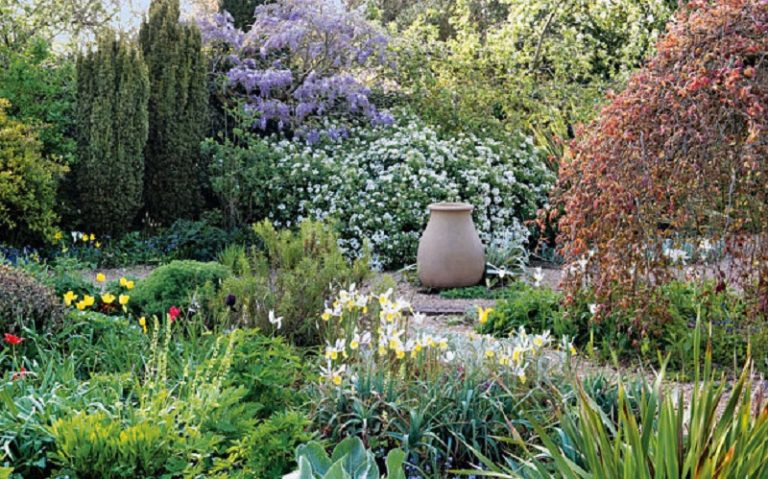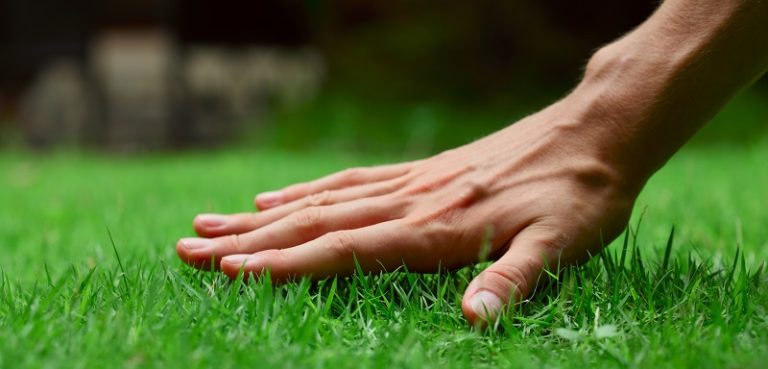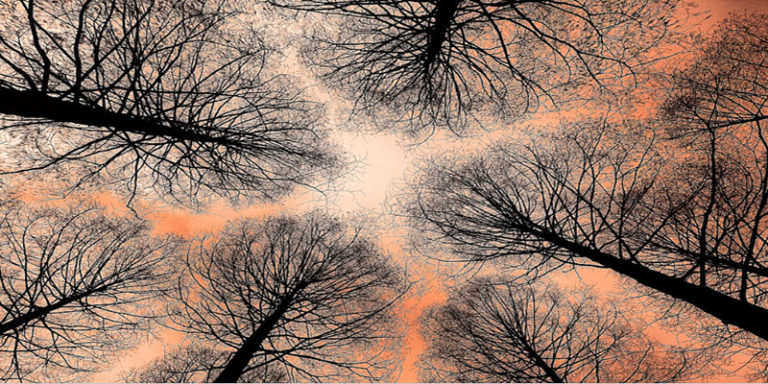Unpretentious flowering shrubs that should be planted on your site. Part 2
In this article, we have prepared for you a list of ornamental shrubs that should be planted on your site.
Continuing the theme of ornamental trees and shrubs in the garden, we have prepared part 2 of unpretentious brightly flowering plants for your landscape.
- In this article you will find 10 more unpretentious ornamental shrubs, and these are:
- Magnolia
- Sakura
- Ornamental almonds
- Weigella
- Jasmine
- Budleia
- Calicanth
- Tree peony
- Ceanothus
- Bobovnik – golden rain
To brighten up your garden throughout the year, it is also worth planting ornamental shrubs. It is practically unnecessary to care for such bushes, they bloom and make bright spots in the landscape design of the garden from spring to autumn.
But it is worth remembering that so that the bush does not lose its neat appearance, it needs to be trimmed in spring or autumn.
Read 10 more unpretentious ornamental shrubs that you should plant on your site in the first part of unpretentious bushes. “
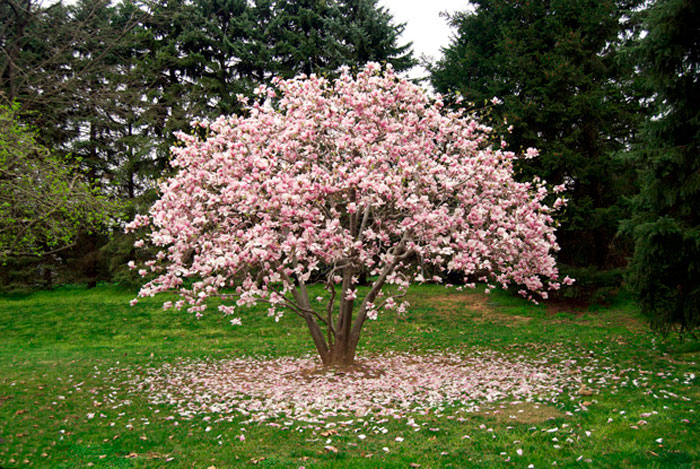
Magnolia
Magnolia is an extremely beautiful plant that blooms in spring ( May ). Its leaves are simple, and the flowers are large, have a white, cream, yellow, pink, purple color. Its buds exude a pleasant and very delicate aroma. Magnolia has decorative fruits that become a real decoration of the tree from late summer until the end of the autumn period.
Magnolia is used in landscape design. It looks great against the background of conifers.
In order for healthy and beautiful magnolias to grow in your garden, you need to plant them correctly. How to plant magnolias correctly, consider in the article: MAGNOLIA: PLANTING, CARE
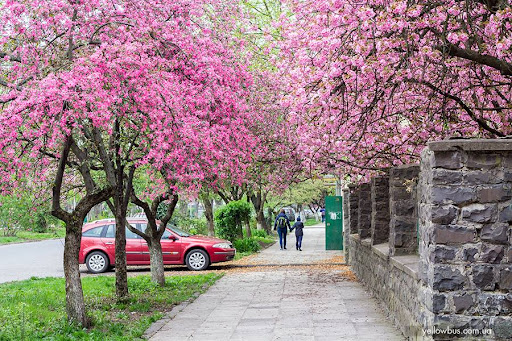
Sakura
Sakura is an ornamental Japanese cherry that blooms in spring ( April – May ). Trees belong to the Rosaceae family. Sakura is characterized by a spreading rounded crown. Its bark has a brownish-red color and is covered with a network of small cracks. Oval leaf plates with serrations in a circle change color in the range from dark crimson to brown in autumn. East Asian cherries have gained insane popularity with colorful flowering. The petals of the plant have shades of white-pink tonality. There are species with yellow, red and crimson tassels. The fruits are not suitable for eating, so cherry blossoms are classified as ornamental plants.
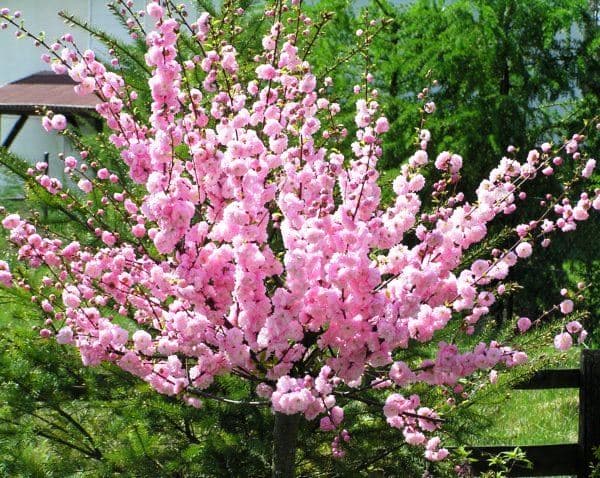
Ornamental almonds
Almonds are one of the most beautiful ornamental plants that bloom in spring. Almond is a drought-resistant, frost-resistant, unpretentious plant to soils. A deciduous bush up to 1.5 m high, which turns into a fabulous pink cloud during the flowering period. It blooms in May, with pinkish-red flowers similar to small roses, flowering lasts up to 20 days. At the end of flowering, the bush is covered with green leaves. Its fruits are inedible.
How to plant and how to care for almonds, we will consider in the article: DECORATIVE ALMONDS: PLANTING, CARE

Weigela
Weigela is an unpretentious ornamental shrub that blooms in spring and has a very spectacular appearance. The plant loves moisture and grows quite well in the shade. The palette of leaves turns green from the species (from bright green to brown, there are also variegated ones). The flowers are bell-shaped, about 3 centimeters each. The flowers are solitary or part of loose inflorescences. They can be cream, red, pink, yellow and other colors, while often during flowering the color changes from a paler shade to a brighter one. The fruits are represented by a bivalve box, inside of which there are small seeds.
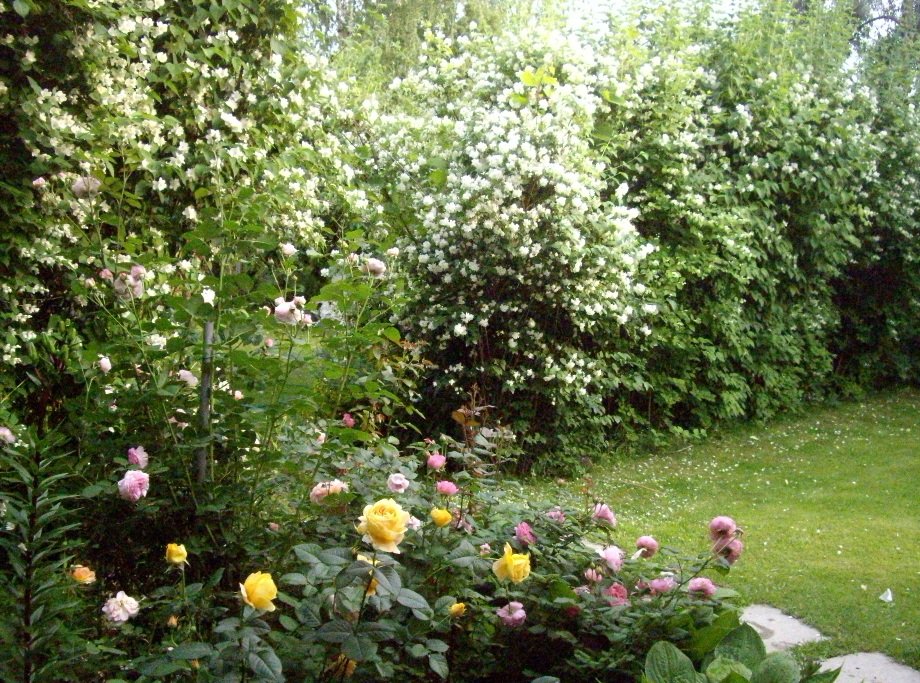
Jasmine
Increasingly, in various parks and gardens, you can see shrubs up to two meters in height, which are dotted with white unusually beautiful flowers, from which the aroma spreads throughout the area, this is garden jasmine.
Jasmine has a very lush crown. It is most beautiful during the flowering period, when yellow or white flowers bloom on the branches, collected in inflorescences. They are incredibly fragrant. Garden jasmine has a large number of different subspecies that differ from each other in the size of the flowers. These plants stand out for being able to adapt to almost any weather conditions.
Garden jasmine is quite undemanding to the landing site. Yes, it grows and develops very well in both sunny and shady places. It can be planted on both the south and north sides of the site. It tolerates both drought and high humidity quite well. Various insects, including most species of bees, love to collect nectar from the jasmine bush.
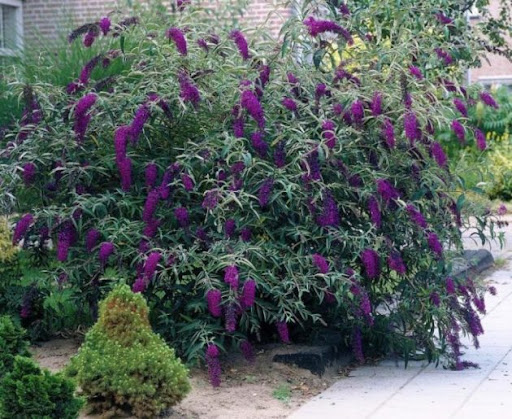
Budleia
Budleia is a shrub with thin shoots and large clusters of flowers, loved by many flower growers when landscaping. It is especially appreciated for its abundant flowering, which begins at the end of July and lasts until the very frost, when many plants no longer bloom.
Budleia This plant got its name from the name of Adam Buddleigh, an English botanist who lived at the turn of the XVII-XVIII centuries, but it is often called “autumn lilac” for its external similarity during flowering or “a magnet for butterflies and bees”, because the flower has a strong sweet-honey smell that attracts insects. Small flowers are collected in dense spike-shaped brushes up to 25-30 cm long. The color of the flowers is pink, purple, white or yellow.
How to plant, and how to care for budleia, read the article: BUDLEIA – CULTIVATION, CARE

Calicanth
If you are a lover of original flowering plants with a strong smell, then you should pay attention to Calycanthus blooming. This plant smells of both leaves and flowers, but especially strongly – the bark is in a dried state. For this aroma, the plant is classified as a spice, called clove tree and Jamaican pepper (Allspice).
Calicanths are deciduous shrubs up to 2-3 meters in height, forming a widespread, irregular crown shape. The bark and wood of almost all types of calicanth exude a very pleasant smell. The leaves and roots of the plant also smell, but less intensely. Therefore, it was used to flavor dishes by the indigenous people of North America.
The shoots of flowering calicanth are covered with elliptical leaves with pointed tips, young leaves are often pubescent. In early June, unusual dark red, white, pink or burgundy flowers with a strong aroma form on the tops of last year’s shoots.
This flower blooms for a long time – until the end of autumn, with single large flowers, but the greatest flowering occurs at the end of June and the first decade of July. After pollination, small brown fruits are formed, which do not have much ornamental value, but contain viable seeds.
Attention! The leaves and seeds of representatives of the genus contain toxic compounds and are poisonous.
How to care for Calicanth read the article : FLOWERING CALICANTH – CARE, REPRODUCTION
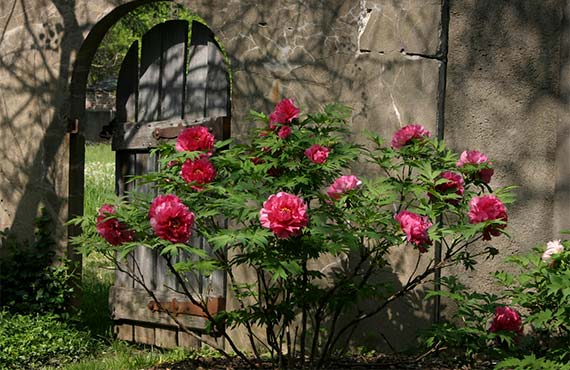
Tree peony
Most often, peonies are used in ornamental gardening – they are used in landscaping and for cutting into bouquets.
Breeders have been cultivating peonies for a long time. To date, more than a hundred varieties of peonies are known. Varieties of peonies differ in size and shape, color, structure of flowers, duration of flowering, etc.
According to the structure of the flower, peony varieties can be divided into: non-double with one row of wide petals, semi-double , double, hemispherical, Japanese and anemone, pink-shaped and crown.
If the peonies were planted correctly, then for the first 2 years your plants do not need care.
Articles about peonies:
SECRETS OF LUSH PEONY FLOWERING

Ceanothus
Ceanothus is a perennial shrub that resembles blue lilacs, blooms from early July to late September. Its flowers have a pleasant aroma and have different colors.
Ceanothus should be planted near verandas, gazebos, it is used to decorate the walls of buildings and, of course, is used in landscape design when creating group compositions, mixborders, hedges and flower beds.

Bobovnik – golden rain
The bean plant, which is also called Laburnum (Laburnum) or golden rain ,and this is due to the fact that the flowering bush is decorated with long yellow inflorescences hanging in a cascade. Belongs to the legume family. This genus is represented by low-growing trees or a deciduous rather tall shrub that should be planted on your site.
During flowering, this plant looks very impressive, due to which it is very popular with gardeners. Growing a bean in your garden is not difficult, but only if you find the most suitable area for it and take care of it properly.
The height of the bean depends on what species and variety it belongs to, and can vary from 3 to 7 meters. Its crown is spreading with a diameter of 3 to 4 meters. It consists of flexible stems that can be straight or weeping. Before the plant blooms, trifoliate long-petiolate oval-shaped leaf plates grow on it. On the wrong side of the leaves, as well as on the shoots, there is a slight pubescence.
Such a plant blooms in the last days of April, and fades in June. Small flowers of rich yellow color have a shape similar to butterflies. They are part of lush brushes, which have a length of 0.2-0.5 m.A large number of inflorescences are formed on one bush. In place of wilted flowers, fruits are formed, which are narrow and dry pods, reaching a length of 50-60 mm. They fully ripen in September.


